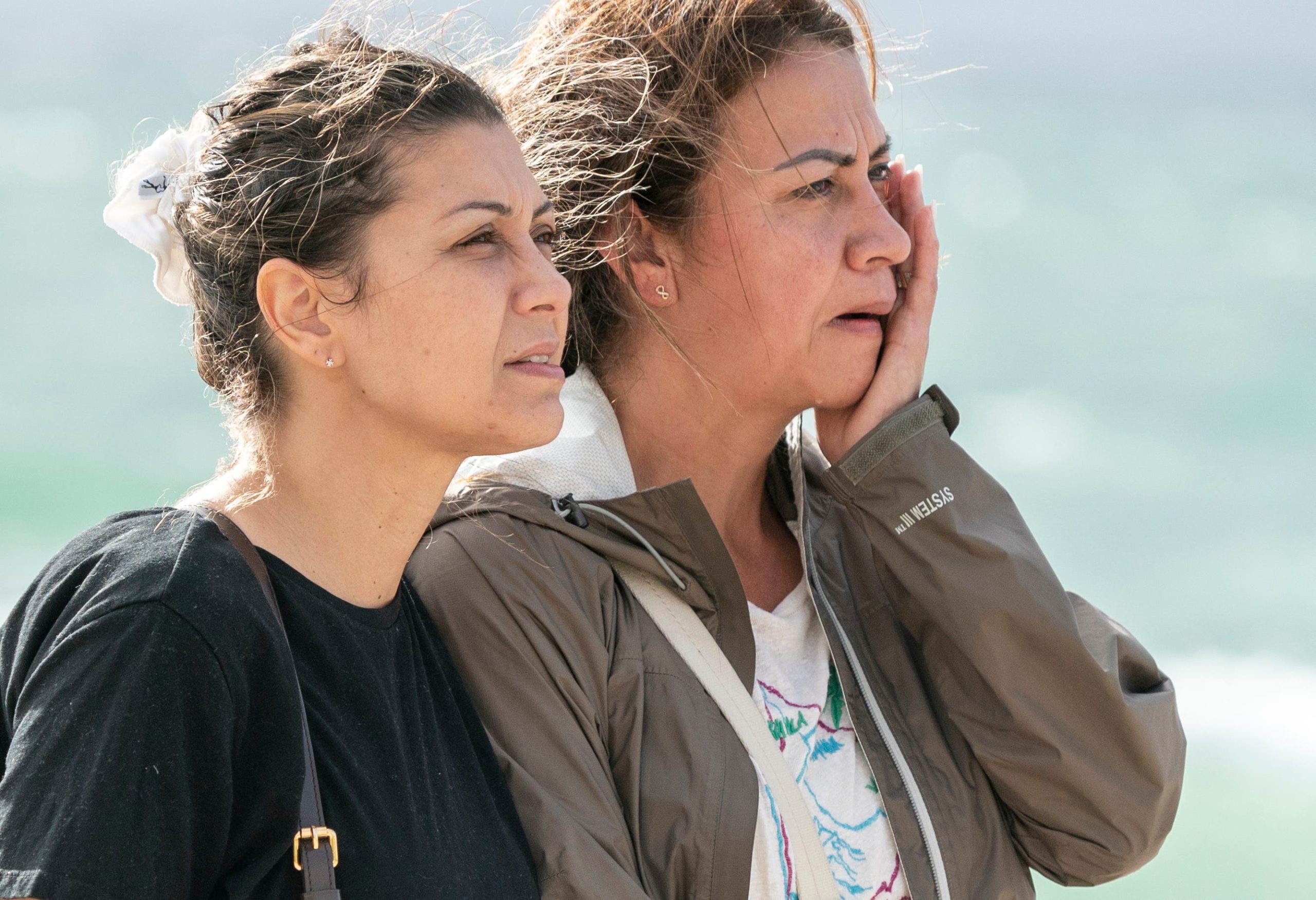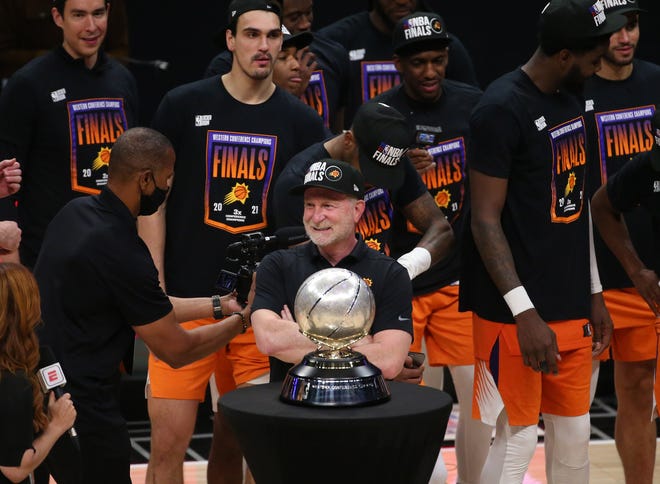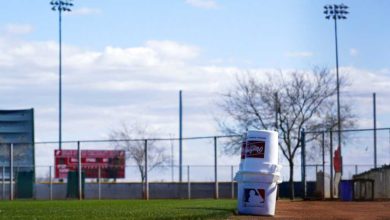

I'm USA TODAY editor-in-chief Nicole Carroll, and this is The Backstory, insights into our biggest stories of the week. If you'd like to get The Backstory in your inbox every week, sign up here.
USA TODAY reporter Romina Ruiz-Goiriena was at the Surfside condominium collapse site just a couple hours after first light last Thursday. Much of the building had crashed to the earth during the night.
Fire trucks filled the streets, but it was eerily quiet.
Police tape was up, but no one stopped her.
She walked right up to the rubble – and went to work.
She quickly learned that families were being directed to a unification center up the street. She walked toward the center while interviewing a health aide headed there too. She was one of the first and remained one of the only reporters in the center all day.
The Surfside area has large Latino and Jewish communities and some are at the intersection of both. Ruiz-Goiriena is Jewish and Latina. Miami is her home town. She felt equally comfortable interviewing in English, Hebrew and Spanish.
In the center, she took cues from the people there. Those who look you in the eye, you approach. Those openly grieving or turned away, you leave alone. When she approached, it was with empathy. She began each conversation with, "I'm very sorry."
"We've talked to a lot of people on probably one of the worst days of their lives," she said. "And they will always remember how you made them feel."
Some wanted to share their story. Some wanted to express their frustration. Some wanted to be left alone. Ruiz-Goiriena respected it all.
The families felt comfortable talking to her. Pablo Rodriguez told her how his mother and grandmother were in the building. His 6-year-old son keeps asking him to call his grandmother's cellphone. “Her cellphone might be smushed,” he tells him, "but try again."
Rodriguez's mother, Elena Blasser, 64, and grandmother, Elena Chavez, 88, are among the 145 people still unaccounted for. At least 18 people have been confirmed dead.
The family was supposed to go swimming Saturday.
“What will I tell my son?” Rodriguez, 40, said as tears rolled down his cheeks. “Saturdays are abuela's days.”
The health aide Ruiz-Goiriena walked with took care of a family in the building. She left Wednesday around 9 p.m. She said it had been a lovely day where she “even took photos of birds on the balcony that afternoon.”
And one family gave Ruiz-Goiriena a letter that led to an important, exclusive story. The president of the Champlain Towers South Condominium Association said damage to the doomed building’s basement garage had “gotten significantly worse” since an inspection about two and a half years earlier and that found deterioration of the building’s concrete was “accelerating.”
"If they trust me enough with the other heavy stuff, if they can trust us with their feelings, they can trust us with their documents," Ruiz-Goiriena said.
Investigative reporter Kyle Bagenstose also broke an important story this week. He has a background in environmental reporting and knows his way around scientific research.
He found a 2020 study that showed the building has been sinking at an alarming rate since the 1990s.
Bagenstose immediately called the researcher, Shimon Wdowinski, a professor at Florida International University.
When Wdowinski saw the news that the Champlain Towers South condominium collapsed, he said he instantly remembered it from the study.
“I looked at it this morning and said, ‘Oh my god.’ We did detect that,' ” he told Bagenstose.
The study didn't use the name of the building, but Bagenstose figured it out by examining the maps in the research and comparing them to current maps of Surfside.
Wdowinski confirmed he was right. "He said that (they) specifically identified movement on that building," Bagenstose said.
But that's just one of the factors that may be at fault.
In 2018 an engineering consultant hired by the condo association noted a “major error” in the building’s design and structural issues in need of repair.
There are historical reports about issues with the pool area, the slab and water into the foundation.
A few months after the release of the FIU study, in July 2020, a roof moisture survey found that "significant subsurface water was detected within the building's roof systems" and that "the water intrusion will usually take the path of least resistance, and may eventually enter in to the interior of the buildings."
In April, residents got a letter from their condo association president saying the building’s basement garage had “gotten significantly worse” since the inspection in August 2018 and that deterioration of the building’s concrete was “accelerating.”
"Is it mainly one thing or the other?" Bagenstose asked. "I think that's going to be revealed over time. I think what's really interesting for me is whether or not this is going to turn out to be an acute problem. So this building uniquely had a bunch of issues and somehow the inspection process just missed it or potentially can this be scarier?
"This is going to take a long time to investigate."
USA TODAY reporters joined with dozens of journalists from our network's Florida newsrooms to cover the tragedy. Reporter Wendy Rhodes was in Surfside for the Palm Beach Post.
For all, they are balancing their duty to report and inform with the emotion of the assignment. Rhodes went to what she called "the wall of the missing," the chain link fence near the collapse where family members post pictures of loved ones in the tower.
On Saturday, she watched a woman stop by.
"She was carrying a kid on her hip. And I didn't get the impression that she knew somebody. She walked from picture to picture and was looking at them and reading them and would just reach up and touch each picture," Rhodes said, her voice catching.
"I don't know if she was like praying or what she might've been doing, but it was so tender and the kid was just very somber and quiet. It was just really a moving moment because I didn't feel like she knew anybody there. She was just somebody that cared."
Ruiz-Goiriena said she's never lost sight of the people in that building, those who are missing, those who've been confirmed dead, "especially because I've been with the families, with people that were affected.
"For me, the best thing that I can do is to report, is literally put their word and their pain on paper. These families have questions. The best thing that I can do is to do my job."
The Backstory: How a Florida newspaper ended up on the moon -- and then became our first NFT
Nicole Carroll is the editor-in-chief of USA TODAY. Reach her at [email protected] or follow her on Twitter here. Thank you for supporting our journalism. You can subscribe here.






